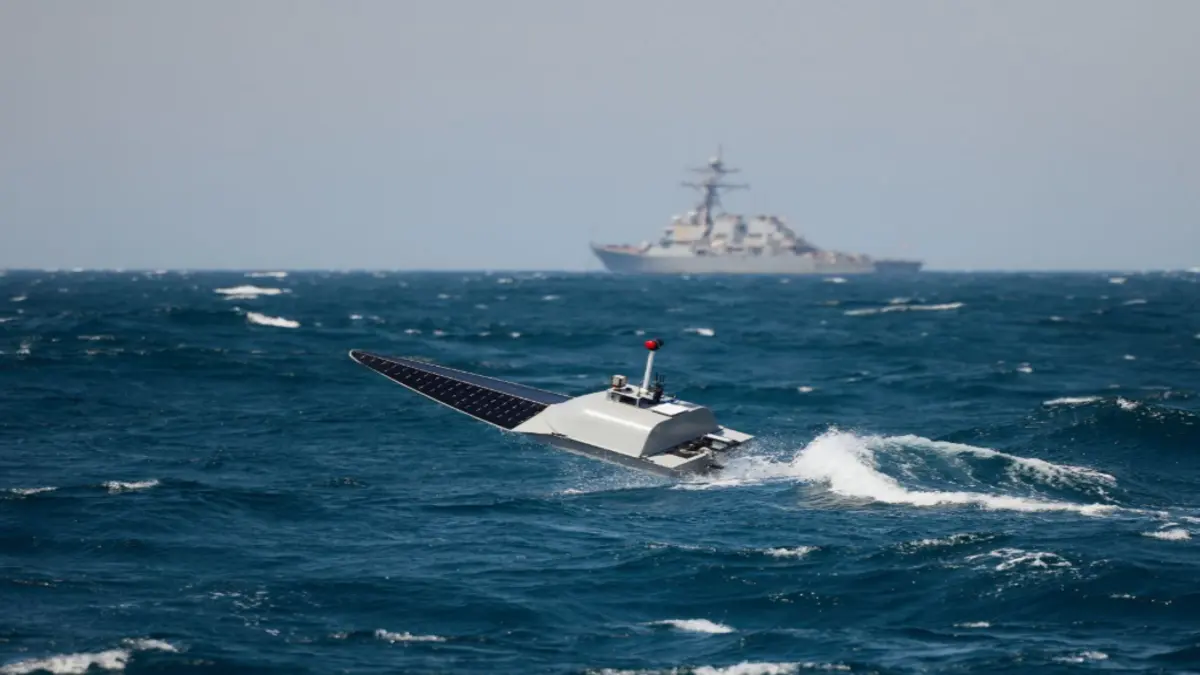“(Washington, D.C.) – In a significant step toward the future of naval autonomy, Rhode Island-based tech startup HavocAI and Lockheed Martin Ventures have entered into a strategic partnership to co-develop scalable medium unmanned surface vessels (mUSVs) for the U.S. military and allied forces.
The collaboration aims to combine HavocAI’s agile autonomous navigation and control systems with Lockheed Martin’s proven expertise in advanced weapons integration, systems engineering and large-scale defense manufacturing.
Joint Development for Scalable Maritime Platforms
The primary objective of the partnership is to rapidly field operational medium USVs, which can execute missions ranging from surveillance to weapons delivery. These vessels are expected to play a key role in the U.S. Navy’s growing unmanned operations and replication initiatives, which will be deployed across multiple domains. A large number of autonomous platforms focuses on fielding.
HavocAI CEO, Paul Lwin emphasizes the transformative nature of the program:
“The future of maritime warfare is autonomous, and MUSV is at the forefront of this revolution. By collaborating with Lockheed Martin, we can integrate advanced weapon systems and deliver complete solutions that meet the evolving needs of our warfighters.”
Chris Moran, Vice President, Lockheed Martin Ventures, added:
“MUSV is a game-changer for maritime defense, offering enhanced range, payload capacity and mission versatility. By combining HavocAI’s innovative autonomy stack with our ability to deliver at scale, we are giving warfighters a decisive edge.”

- (HavocAI)
Technical Highlights and Development Roadmap
HavocAI has already produced more than 50 autonomous USVs on a small scale, including the 14-foot vessels currently in operation. The company has completed trials with a 42-foot prototype and is on track to deliver a 100-foot medium unmanned surface vessel by the end of 2025.
Key technical features of HavocAI’s mUSV design include:
- Modular Payload Base: Capable of accommodating a range of sensors, communications systems, and weapons, including non-lethal and dynamic systems.
- Advanced Autonomy Stack: Capable of autonomous navigation, obstacle avoidance, and dynamic mission adjustment with human-in-the-loop supervision.
- Scalability: Platforms vary Designed for rapid adaptation and production across lengths and configurations, Lockheed Martin expects to scale to meet military procurement demands.
Strategic Implications for Naval Operations
This partnership has significant potential to impact naval operations:
- Operational Flexibility: The mUSV can conduct high-endurance surveillance, intelligence gathering, and strike missions without endangering human crews.
- Rapid Production Path: Lockheed Martin’s manufacturing capabilities provide a rapid path from prototype to fleet-scale production.
- Cost-effective Force Multiplier: Small, low-cost unmanned platforms can augment large naval assets in contested regions.
- Global Market Potential: In addition to U.S. forces, this platform could be a valuable addition to allies seeking similar unmanned capabilities that The Navy could also serve.

- (HavocAI)
Next Steps
According to both companies, the partnership will move toward integrated weapons testing in early 2026, with delivery of the 100-foot HavocAI prototype later this year. Live trials with Lockheed Martin’s defense systems are scheduled for initial evaluation by the U.S. Navy under existing and emerging unmanned programs.
The collaboration represents a growing trend of pairing agile tech startups with defense giants to accelerate the field of advanced military technologies in an increasingly competitive maritime environment.
Further Reading: China’s S-97 Lookalike Helicopter Raises Questions Over Military Ambitions
FAQs
This partnership is important because it accelerates the use of unmanned surface vessels (USVs) in Navy missions. These vessels can also handle tasks such as surveillance, intelligence gathering, and weapons delivery without putting sailors at risk. It also supports the Navy’s push toward autonomous warfare systems.
AI helps ships like HavocAI’s mUSVs make real-time decisions. With advanced autonomy, these ships can avoid obstacles, adjust missions on the go, and operate with human supervision when needed. This makes them more flexible and reliable in rapidly changing environments.
Yes. Medium unmanned surface ships are smaller and cheaper to build than traditional ships. They act as force multipliers, supporting larger ships in disputed territories. This reduces costs while increasing the strength and reach of the Navy.
Havokai plans to deliver a 100-foot-long prototype by the end of 2025. Joint trials with Lockheed Martin Defense Systems are expected to begin in 2026, giving the U.S. Navy the opportunity to test the platform in real missions.








Leave a Reply